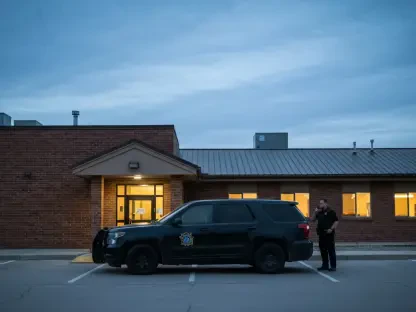Amidst civil unrest and contentious policy debates, the quiet hum of helicopters patrols the skies—but who controls their flight when state and federal goals collide? The deployment of the National Guard during protests often sparks fierce debate about where jurisdiction truly lies. In Los Angeles, tense discussions unfold as differing opinions and legal challenges attempt to draw clear lines of authority when it comes to state National Guards. Recent incidents in Los Angeles spotlight this very issue, underscoring a pressing question of power and governance.
Understanding the Importance of State Sovereignty Versus Federal Authority
The dilemma of who controls the National Guard during times of civil unrest stems from a deeper conflict between state sovereignty and federal authority. The issue garnered attention during protests against immigration raids led by Immigration and Customs Enforcement (ICE), where the federal deployment of the National Guard ignited controversy. This scenario highlights the need to consider how power is distributed when both state interests and federal imperatives demand attention.
Context and Legal Precedents
Historically and legally, the National Guard’s deployment operates under specific directives governed by statutes such as 10 U.S.C. § 12406. This regulation outlines circumstances that necessitate gubernatorial consent before federalization. Previous conflicts have frequently emerged over such deployments, as states aim to retain control while federal entities argue their jurisdiction is necessary to ensure broader security and order. This tension traces back to instances throughout U.S. history, where the delicate balance of power has often swung between centralized authority and state prerogatives.
The Case That Questioned the Lines: California Versus the Trump Administration
At the heart of this legal quagmire lies a notable clash between California’s leadership and the Trump administration. Amid protests sparked by ICE raids in Los Angeles, Governor Gavin Newsom, along with Attorney General Rob Bonta, pursued legal action, alleging an unauthorized mobilization of the California National Guard. The contention centered on whether the federal government had overstepped its boundaries, monopolizing state resources to suppress protests. This legal conflict emphasized arguments surrounding both state sovereignty and federal oversight in implementing monitored policies.
Voices from the Ground: Insights from Experts and Stakeholders
Navigating this murky legal terrain entails a mosaic of voices, each adding depth to the debate. Legal scholars emphasize the intricate legal framework and guiding precedents that shape National Guard deployment. California’s Governor Newsom and AG Bonta consistently voice staunch opposition against perceived federal encroachment. On the other hand, federal officials argue necessity in maintaining order and ensuring national security. Union leader David Huerta and other affected individuals humanize the stalemate, highlighting real consequences felt by those at the center of civil demonstrations.
Exploring Strategies for State Autonomy
States, facing similar scenarios, might leverage various strategies to assert autonomy. Pursuing legal injunctions and frameworks for negotiation with the federal government could facilitate better alignment on each side’s goals. Balancing this complex relationship requires respectful dialogue, strategic policymaking, and, if tension mounts, litigation. Such discourse can shape the mutual respect required between levels of government, ensuring governance remains equitable without overreaching interventions.
Looking Ahead: Navigating the Complexities for the Future
Looking ahead, the underlying tensions between state and federal authority in deploying the National Guard are set to persist as a vital issue of governance. The recent case served as a catalyst for debate, feeding discussions about autonomy, civil liberties, and governance style. Understanding and respecting these delicate boundaries could foster fairer applications of power that resonate with overarching democratic principles. As the nation continues this dialogue, enhanced collaboration and clearer legal parameters hold promise to steer future endeavors toward cohesion and mutual respect.









